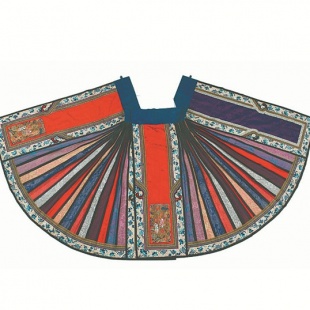Traditional Chinese garment makes stylish comeback


Along with some notable professors, Ma published a post to explain the features of mamianqun and its origin in China.
Yet, Ma found one single post far from enough to make the public understand mamianqun.
Working together with authors, Donghua University Press published a book on May 17 to comprehensively explain the traditional Chinese clothing, including its history, colors, patterns, techniques and cultural connotations.
"Mamianqun is one of the most influential and widely worn traditional Chinese clothing in the recent guofeng — Chinese style using elements from traditional culture — boom. Its popularity not only leads the new Chinese fashion trends but also witnesses the rising cultural confidence of Chinese people," says Jia Xizeng, one of the curators of the exhibition and an author of the book.
He notes that the mamianqun design, structure, pattern and cultural connotations have formed the coexistence of its sporty, decorative and ceremonial features, representing the wisdom and aesthetic of ancient Chinese dressmaking.
Such features have also made mamianqun a versatile garment suited for both everyday wear and ceremonious occasions.
Seamlessly integrating tradition and modernity, an increasing number of young people in China are choosing it for their mix-and-match daily outfits.
According to a report on female consumption trends by Douyin e-commerce, over the past year, the platform's orders for new Chinese-style clothing increased by 195 percent year-on-year. Orders for hanfu surged by 336 percent year-on-year, with orders for mamianqun rocketing by 841 percent year-on-year.
Jia Yiliang also notes that she has seen the growing popularity of mamianqun and hanfu among males.
"In addition to young female visitors, we are pleased to see many males and elderly at the exhibition. They are yearning for traditional Chinese clothing as well. Unlike other traditional Chinese garments, such as qipao, mamianqun usually relies less on gender or body shape and is easier to wear."






































